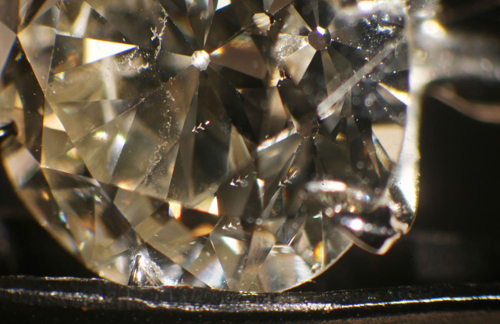
Jewelers are noticing a change in that blind devotion toward the gemstone in its natural form. Technology has allowed man-made diamonds to become so similar to mined diamonds that they’re working their way into the jewelry market.

There is a 3-carat natural diamond waiting for Tammy Borg at a shop on Chicago’s historic Jewelers Row, one that’s so big it’ll nearly cover the width of her finger.
She and her soon-to-be fiance spent weeks hunting for the perfect diamond for her engagement ring, and finally found it at Mon Ami Jewelry. The diamond has a few flaws, Borg said, but to her, it’s perfectly imperfect.
“I would’ve never considered anything other than (a natural diamond),” she said.
Jewelers are noticing a change in that blind devotion toward the gemstone in its natural form. Technology has allowed man-made diamonds to become so similar to mined diamonds that they’re working their way into the jewelry market, for better or worse, with some budget-conscious shoppers requesting them as a cheaper alternative.
Their rise in prevalence has left diamond sellers concerned that the synthetics could creep into their inventory unannounced, especially during the holiday shopping season, one of the year’s busiest times for jewelry sales.
No jeweler wants to be the one that sells a client a man-made diamond the jeweler thought was natural, especially when customers — often inexperienced in diamonds — rely on the jewelers to educate them.
It hasn’t become a problem yet, but the tenants along Chicago’s Jewelers Row want to be ready when it does. Windy City Diamonds, for example, bought its own machine to test for synthetics — no small investment, as such machines can cost thousands. Others are relying heavier on labs to do the testing for them.
The concern is triggering an effect similar to the one seen with blood diamonds. Just as jewelers once had to secure their supply chains against stones coming from war-torn areas, sold to finance insurgencies or warlords, now they’re guarding themselves against nefarious sources that could slip man-made diamonds into the supply.
“Before it was a concern of conflict diamonds, now it’s a concern of synthetic diamonds,” said Anand Sheth, owner of Mon Ami Jewelry. “We always want to know the lineage of our diamonds.”
But Sheth contends that man-made diamonds could be a good thing for business. They’re not part of Mon Ami’s standard line, but the store can get them if a customer asks.
That’s the trend along the two-block stretch of Chicago’s downtown known as Jewelers Row. Most of the diamonds on display are natural, forged somewhere in the earth over thousands of years before being dug out and set into an engagement ring. Some of the more than two dozen shops won’t deal in synthetic diamonds, while others are just starting to dabble.
The stores there have been flooded with people this holiday season, both veteran gem shoppers and eager first-time buyers alike.